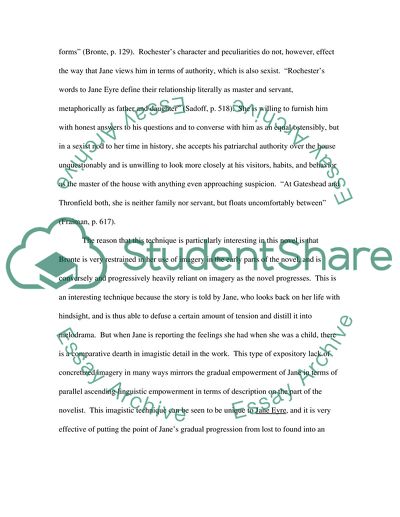Cite this document
(Analysis of Jane Eyre and Pride and Prejudice in the Context of Research Paper, n.d.)
Analysis of Jane Eyre and Pride and Prejudice in the Context of Research Paper. Retrieved from https://studentshare.org/literature/1746257-jane-eyre-and-pride-and-prejudice-are-both-19th-century-novels-how-do-they-both-show-that-this-era-was-responsible-for-a-large-amount-of-anti-female-sexism-in-society-and-the-economy
Analysis of Jane Eyre and Pride and Prejudice in the Context of Research Paper. Retrieved from https://studentshare.org/literature/1746257-jane-eyre-and-pride-and-prejudice-are-both-19th-century-novels-how-do-they-both-show-that-this-era-was-responsible-for-a-large-amount-of-anti-female-sexism-in-society-and-the-economy
(Analysis of Jane Eyre and Pride and Prejudice in the Context of Research Paper)
Analysis of Jane Eyre and Pride and Prejudice in the Context of Research Paper. https://studentshare.org/literature/1746257-jane-eyre-and-pride-and-prejudice-are-both-19th-century-novels-how-do-they-both-show-that-this-era-was-responsible-for-a-large-amount-of-anti-female-sexism-in-society-and-the-economy.
Analysis of Jane Eyre and Pride and Prejudice in the Context of Research Paper. https://studentshare.org/literature/1746257-jane-eyre-and-pride-and-prejudice-are-both-19th-century-novels-how-do-they-both-show-that-this-era-was-responsible-for-a-large-amount-of-anti-female-sexism-in-society-and-the-economy.
“Analysis of Jane Eyre and Pride and Prejudice in the Context of Research Paper”, n.d. https://studentshare.org/literature/1746257-jane-eyre-and-pride-and-prejudice-are-both-19th-century-novels-how-do-they-both-show-that-this-era-was-responsible-for-a-large-amount-of-anti-female-sexism-in-society-and-the-economy.


